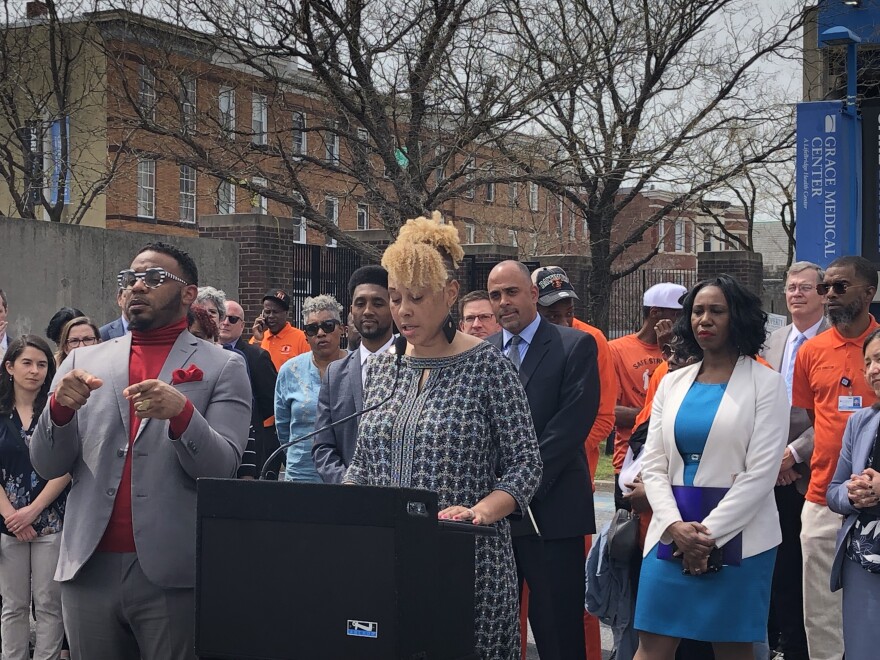Baltimore Mayor Brandon Scott announced Wednesday he will invest more than $10 million of American Rescue Plan Act money in a public health and community based approach to reducing violence.
Scott said the program, which he’s calling a “Community Violence Intervention (CVI) Ecosystem,” will connect Safe Streets, the city’s flagship gun violence reduction program, with hospital partners, community organizations and wraparound services.
The investment is part of $50 million in federal funds that Scott announced last fall for public safety efforts.
“For over half a decade, we have lost more than 300 Baltimoreans a year to violence, much of it fueled by guns,” he said. “I know that this city is more than the trauma that so many of us face each and every day.”
Scott was joined by Safe Streets workers, as well as the city health commissioner, hospital officials and advisors of the White House Community Violence Intervention Collaborative.
The mayor said the ecosystem will connect people with victim services for the first time, including housing, employment and emergency relocation, for those experiencing trauma and recovering from gun violence.
“Too often in our neighborhoods, interpersonal conflict escalates into cruel and deadly behavior,” Scott said. “We know that this is something that we cannot police our way out of.”
The announcement came after the mayor proposed a $5 million increase to the public budget in the 2023 spending plan he released Monday.
Scott rose to power as mayor in the aftermath of George Floyd’s murder by police in Minneapolis with many of his progressive supporters hoping he’d cut the city police budget. So far, Scott has only increased funds, while also announcing initiatives that he has said would tackle violence’s root causes.
City leaders also issued Wednesday the results of a months-long internal evaluation of Safe Streets that cited a lack of oversight and reported that workers complained their training was inadequate.
For example, said Shantay Jackson, director of the Mayor’s Office of Neighborhood Safety and Engagement (MONSE), Safe Streets has never had a standard operations manual.
“That will change,” she said. “It includes establishing adequate training and professional development for violence interrupters and organizations who are participating in this ecosystem. It includes a complete focus on workforce safety.”
Jackson said the standard operations manual will roll out some time in May, after which the city will have a clearer path forward for the CVI ecosystem.
The report outlines other areas for improvement, which include geographic limitations: the program covers 2.6 square miles in a 90 square mile city.
Jackson called Safe Streets an “anchor” and “lifeline” for the city, adding that it has conducted 527 mediations so far this year.
But she added that the program would benefit from strengthening relationships with the surrounding community.
“Baltimore has not always made the necessary investments to make this program as effective for our communities as we know that it can be,” Jackson said. “For the first time, this administration is prioritizing this program. Because we recognize the major role that Safe Streets plays in the greater CVI ecosystem.”
She said that the new ecosystem, with support from hospitals, community organizations and wraparound services, would help Safe Streets meet its full potential.
“We are growing our on the ground capacity to directly intervene in conflicts and disputes before they escalate to violence,” Jackson said.
Correction: An earlier version of the story incorrectly stated that the mayor's $10 million investment was in addition to $50 million he had allocated last year for public safety. The $10 million investment is part of that $50 million.




